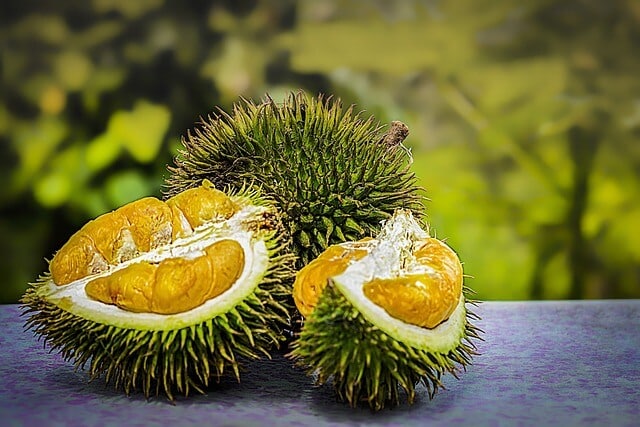
Durian – Indonesia national fruit
The national fruit of Indonesia is Durian which is found in different parts of Indonesia. Durian is popular fruit in Indonesia which can be found in almost all the fruit shops, supermarkets and street vendors.
Durian is popular fruit in Indonesia which is known for its unique taste and smell. Other popular fruits from Indonesia are Mangosteen, Jackfruit, Rambutan and Sapodilla.
Scientific Classification
Scientific name: Durio
Higher classification: Mallows
Family: Malvaceae
Kingdom: Plantae
Order: Malvales
Uses of Durian
In Indonesia, the durian is not only a food item but also a symbol of wealth, prosperity and strength. The fruit has many benefits for your health.
Durian fruit is rich in vitamin C and minerals such as iron, calcium and potassium. It also contains vitamins A, B1 and B2.
According to research conducted by The International Medical Center (IMC), durian has anti-cancer properties that help reduce the risk of cancer. It also helps improve brain function by increasing oxygen flow to the brain cells.
Importance of Durian in Indonesia
The national fruit of Indonesia is Durian. Durian is found in different parts of Indonesia, including Bali and Sumatra.
The people of Indonesia love to eat Durian because it has a unique taste that they enjoy.
Durian is an important part of Indonesian culture because it is associated with religious festivals and holidays.
Why is Durian the national fruit of Indonesia?
Durian has been chosen as the national fruit of Indonesia because of the following reasons:
Durian is considered as national symbol of Indonesia.
The durian tree is a symbol of strength and resilience, and it has been used to represent Indonesia. The image of the durian is often seen on Indonesian flags, coins and buildings.
In addition, durian also represents Indonesian people’s love for their country.
Durians are produced in many parts of Indonesia but they are most popular in Java island where they are grown abundantly.
